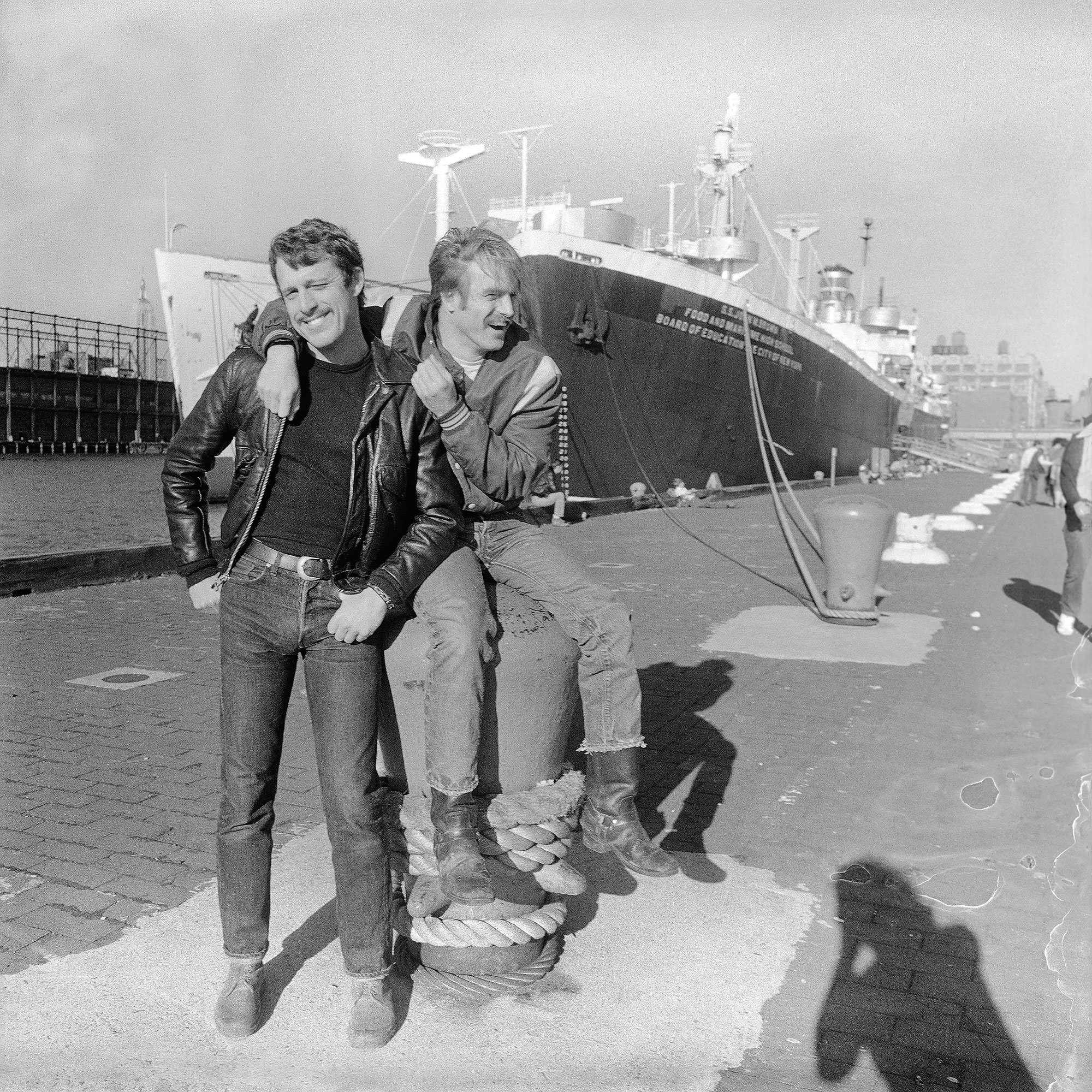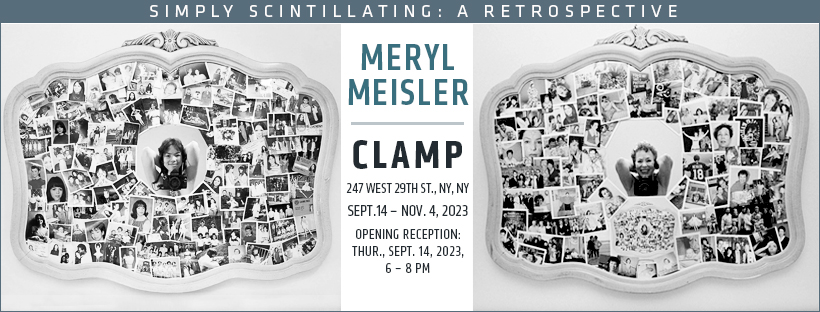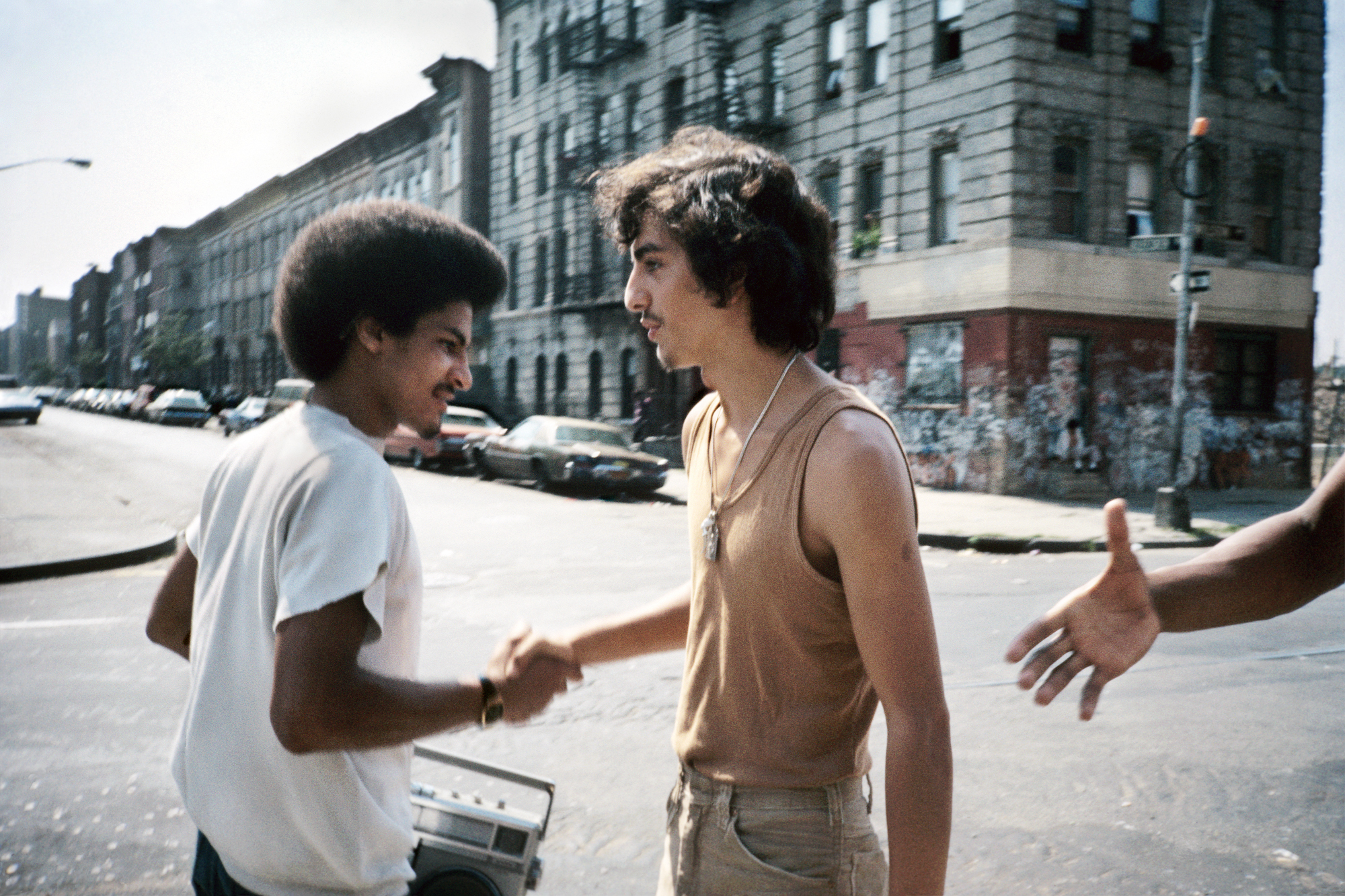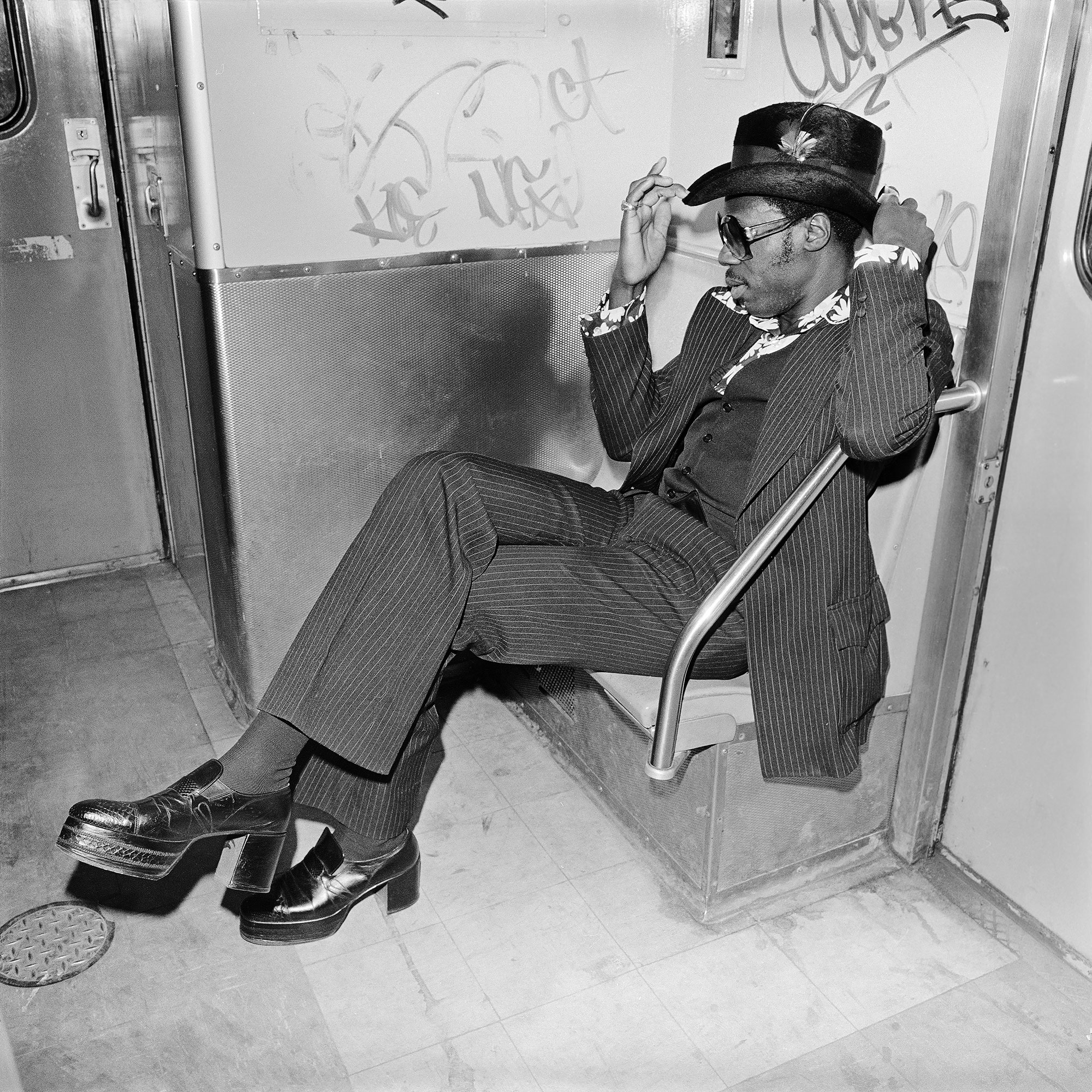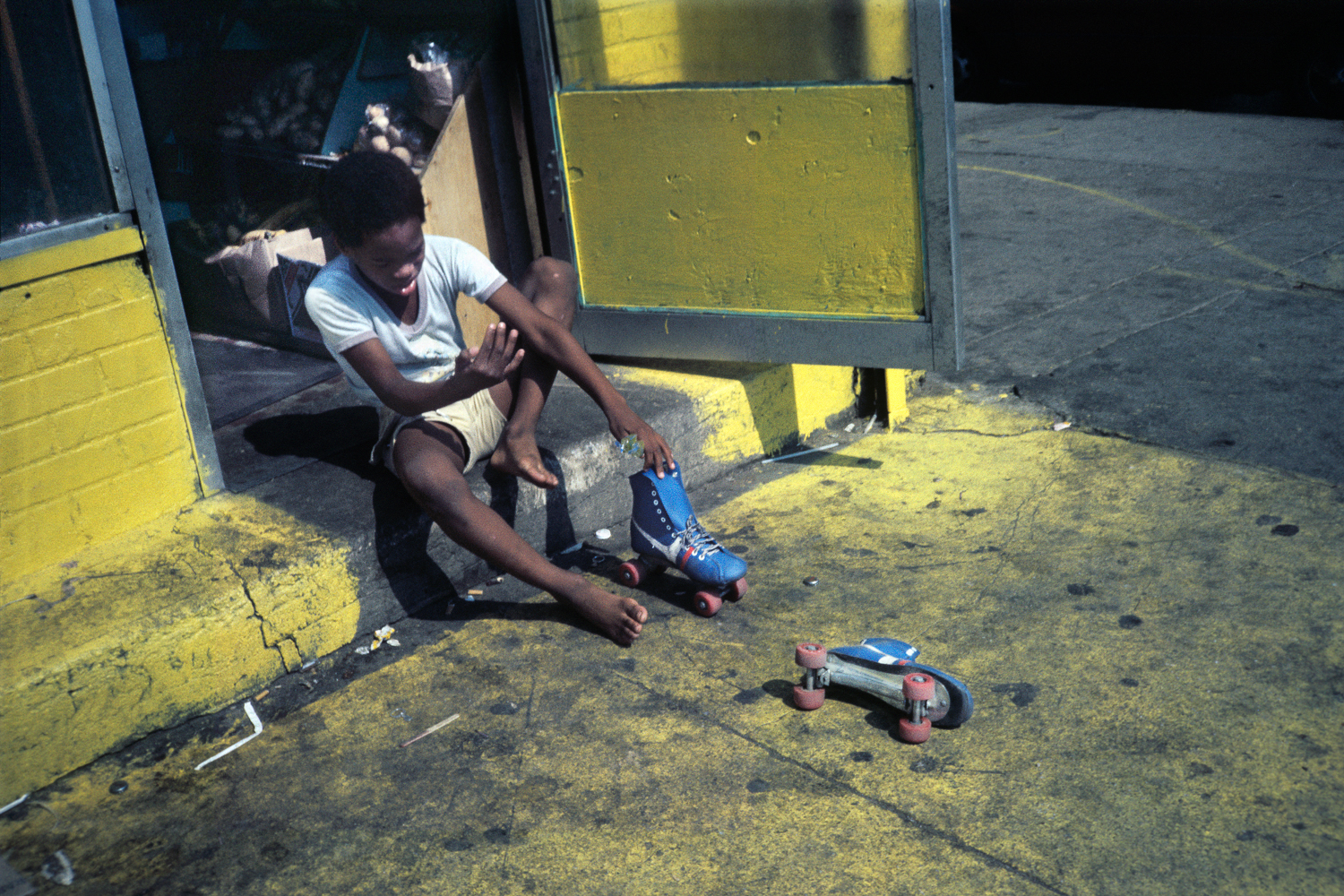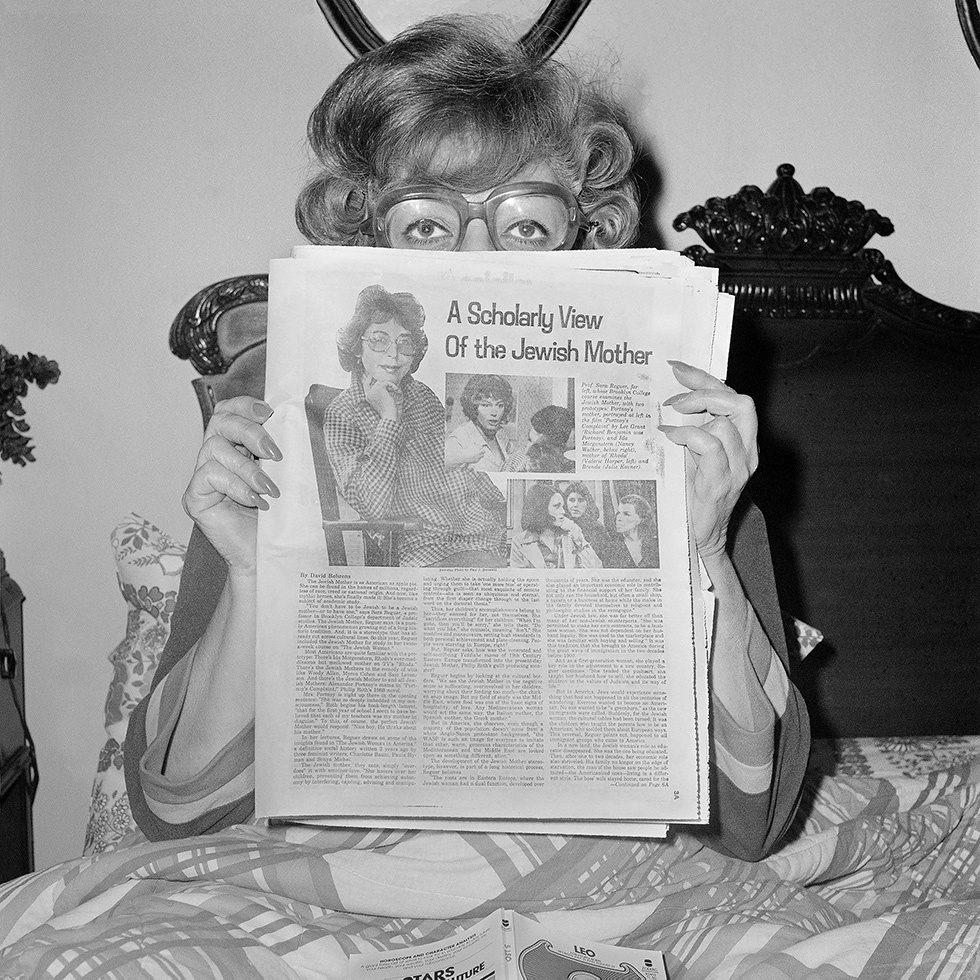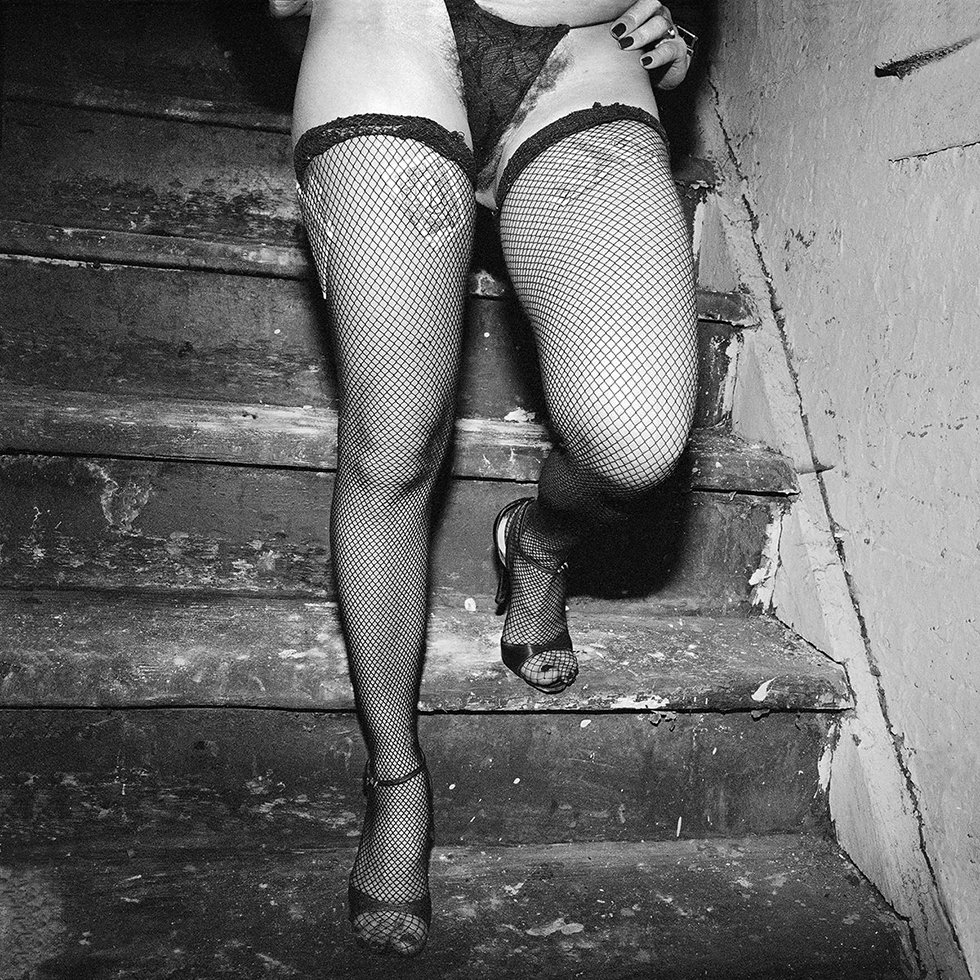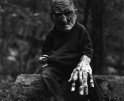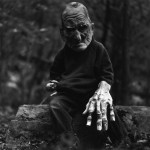Meryl Meisler: Simply Scintillating: A Retrospective
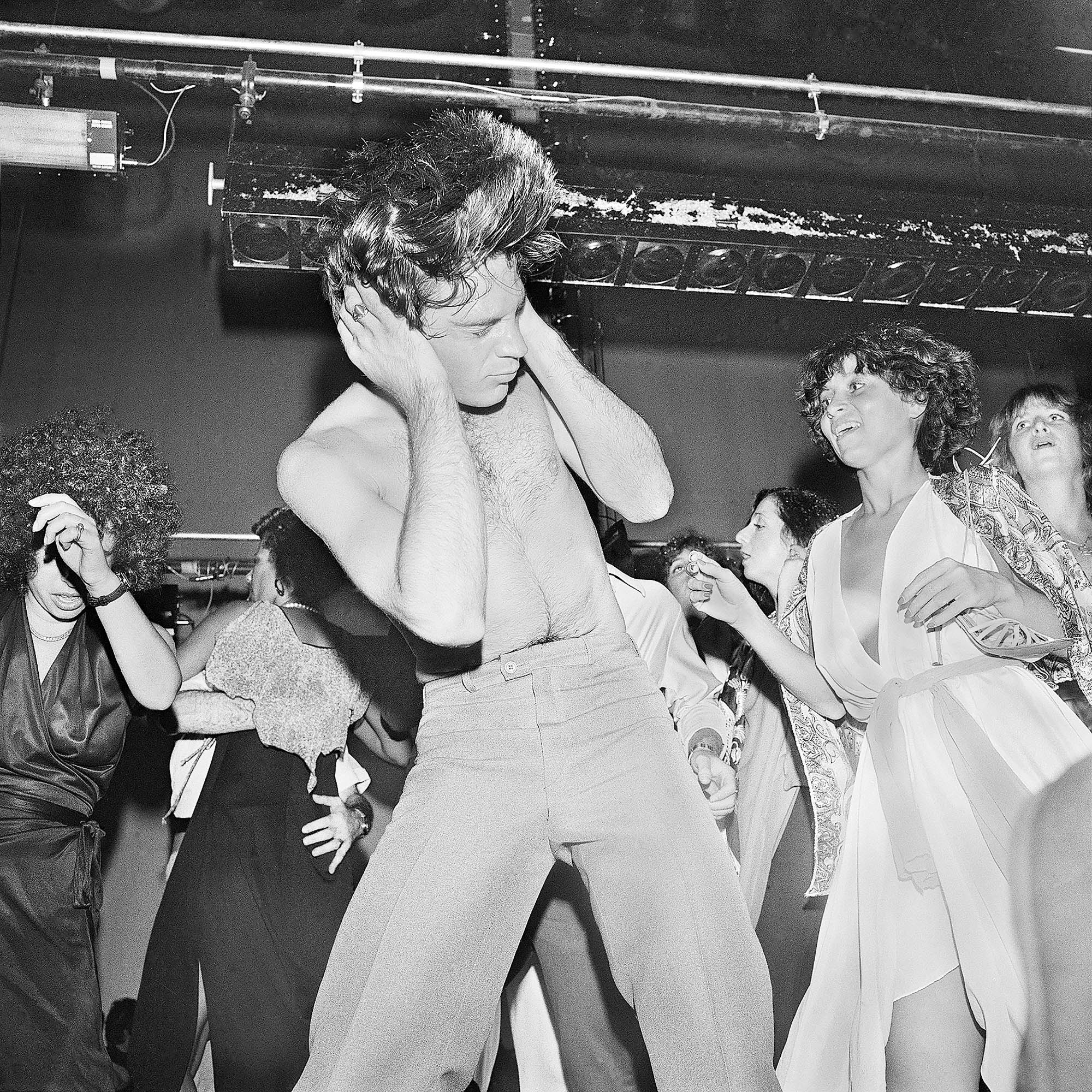
©Meryl Meisler, JJ Holding Head as Hair Flies While Dancing with JudiJupiter, Studio 54, NY, NY, July 1977, Gelatin Silver Print
My entire life I have wanted to visit New York, not only to see the sights but to connect with the people who choose to call this fanciful city home. Although I have not physically stepped foot on New York soil, Meryl Meisler’s photographs makes it seem as though I have. Through her eyes, the people of New York are bold, youthful, emphatic, and somehow vulnerable in an unexpected way. Meisler shows us humanity that is overlooked on a daily basis, year after year. Though her work spans many generations, the emotions that are presented in each photo remain constant.
Meryl Meisler was born 1951 in the South Bronx and raised in North Massapequa, Long Island, New York. Inspired by photographers such as Diane Arbus and Jacques Henri Lartigue, as well as her dad, Jack, and grandfather, Murray Meisler, Meryl Meisler began photographing herself, family, and friends while enrolled in a photography class taught by Cavalliere Ketchum at the University of Wisconsin, Madison. In 1975, Meisler returned to New York City and studied with Lisette Model, continuing to photograph her hometown and the city around her. After working as a freelance illustrator by day, Meisler frequented and photographed the infamous New York discos. As a 1978 C.E.T.A. Artist grant recipient, Meisler created a portfolio of photographs which explored her Jewish identity for the American Jewish Congress. After C.E.T.A., Meisler began a three-decade career as a NYC public school art teacher.
Meisler has received fellowships, grants, and residencies from the New York Foundation for the Arts, Light Work, YADDO, The Puffin Foundation, Time Warner, Artists Space, C.E.T.A., the China Institute, and the Japan Society. Her work has been exhibited at the Brooklyn Museum, Brooklyn Historical Society, the Center for Photography at Woodstock, Dia Art Foundation, MASS MoCA, Islip Art Museum, Annenberg Space for Photography, the New Museum for Contemporary Art, Everson Museum of Art, New-York Historical Society, Steven Kasher Gallery, the Whitney Museum of American Art, the Zillman Museum of Art and in public spaces including Grand Central Terminal, South Street Seaport, Photoville, and throughout the New York City subway system. Her work is in the permanent collections of the American Jewish Congress, ARTPPOOL Budapest, AT&T, Bibliothèque Nationale de France, the Brooklyn Historical Society, Book Art Museum (Poland), Columbia University, Emory University, Islip Art Museum, the Library of Congress, Musée de la Poste Paris, Smith College Museum of Art, Smithsonian Institute, University of Iowa, and The Waskomium, and can be found in the artist book collections of Carnegie Mellon, the Centre Georges Pompidou, the Chrysler Museum, the Museum of Modern Art NYC, Metronome Library, and the Whitney Museum of American Art.
Upon retiring from the New York City public schools, Meisler began releasing large bodies of previously unseen work. Her first monograph, A Tale of Two Cities: Disco Era Bushwick (Bizarre, 2014), received international acclaim. The book juxtaposes her zenith of disco photos with images of the burned out yet beautiful neighborhood of Bushwick, Brooklyn in the 1980s. Her second book, Purgatory & Paradise: Sassy ‘70s, Suburbia & The City (Bizarre, 2015), contrasts intimate images of home life on Long Island alongside New York City street and night life. Her most recent monograph is titled New York PARADISE LOST Bushwick Era Disco (Parallel Pictures Press, 2021).
Meryl Meisler lives and works in New York City and Woodstock, New York.
Follow Meryl Meisler on Instagram: @merylmeisler
CLAMP is proud to present “Meryl Meisler | Simply Scintillating: A Retrospective“—the artist’s second solo exhibition with CLAMP and the first retrospective of the artist’s five-decade career as a photographer, which began in 1973.
The work in “Simply Scintillating” spans from Meisler’s early pictures of suburban Long Island to the frenetic clubs of 1970s Manhattan, to slices of daily life in pre gentrification Bushwick, to the present, where Meryl has found herself back in the nightlife world documenting the contemporary party landscape through a lens informed by decades spent watching New York and its inhabitants evolve.Regardless of whether her subject is a stranger on the Bowery, Grace Jones at a club opening, or a child in Bushwick putting on roller skates, Meisler maintains a perspective and voice as a photographer who does not shy away from the absurd and joyful. As the artist puts it, she has a “queer, quirky eye.”
Mixing pictures from different eras and contexts is not a new strategy for Meisler, who once had an epiphany below a disco ball in a dance club in Bushwick. At that moment, she realized that her pictures of glamorous nightclubs and humble street corners in Bushwick made sense together—telling a wider and more complex story of the city. The clubs are no longer just downtown; they are now out in the neighborhood where Meisler used to teach.
A public school teacher for 31 years, Meisler only revealed her vast photographic archive upon retiring in 2010. Then the work emerged like a bat out of hell! This exhibition offers a peek into the archive, including vintage and contemporary prints surveying the artist’s entire collection of images.
This exhibition is on view September 14—November 4, 2023.
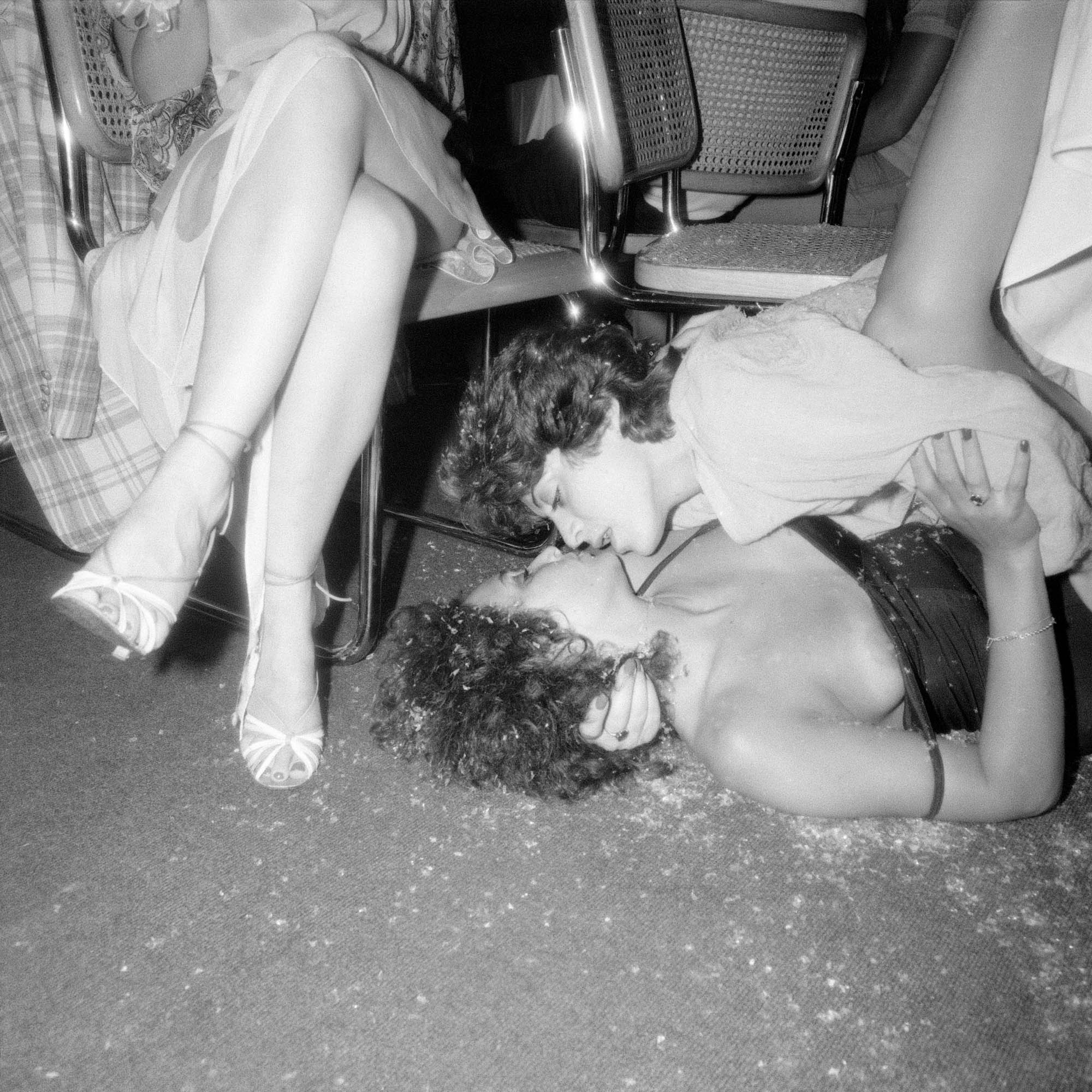
©Meryl Meisler, Women Embrace on Floor Near JudiJupiter’s Legs Les Mouches, NY, NY, June 1978, Gelatin Silver Print
Kassandra Eller: To start off, I just want to say that I love the way you describe yourself as having a “queer, quirky eye.” As an artist that is the best asset to have! I would like to talk about how your project Simply Scintillating came about. How did this photographic project begin and how did it evolve into what it is today?
Meryl Meisler: Thank you. As a child, I realized I “saw funny”. When CLAMP offered me the opportunity for a solo show celebrating 50 years of my passion for photography, we needed to come up with a fitting show title. I proposed “Simply Scintillating” because it describes my work well. (adv) means “in a straightforward or plain manner. Scintillating (adj.) means exciting, clever, stimulating. CLAMP liked the title and added the words “A Retrospective”. Thus, “Simply Scintillating: A Retrospective” came about.

©Meryl Meisler, Mom Getting her hair Teased at Besame Beauty Salon North Massapequa, NY, June 1976, Gelatin Silver Print
KE: In your biography you state you were an art school teacher for 31 years. That is quite a tenure in teaching! Would you say that your career as a teacher informed your photographic work in a way?
MM: Yes, indeed, I was a NYC public school art teacher for 31 years. After retirement from full-time teaching, I supervised future art educators in NYU graduate school for nearly five years. Thirty-six years of teaching certainly informs my photography and life. It is most evident in the photographs I took on the streets and classrooms of 1980s/90s Bushwick, where I taught for 14 years. My most extensive body of unseen work is thirty six years of an insider’s point of view photographing NYC public and private schools.

©Meryl Meisler, Two Queens, One Blonde, One Brunette, COYOTE Hookers Masquerade Ball, CopaCabana, February 14, 1977, Vintage Gelatin Silver Print
KE: Having an exhibition at CLAMP is quite the honor! What were your thoughts when learning your work had been accepted?
MM: I was thrilled that CLAMP offered me a second solo show. My first exhibit, “New York PARADISE LOST Bushwick Era Disco,” opened in June 2021. To be selected for the September 2023 season opener is a heartfelt, great honor.
KE: I’m sure you had quite the array of photographs to cull for this project. How did you go about choosing the photographs that would be included? What qualities were you looking for in an image?
MM: I enjoy having my work curated. As artists, we look at our work so much; having fresh, erudite eyes is good. Brian Clamp, the gallerist, curated both my shows at CLAMP. In addition to the images from my three books, Brian chose prints from my 2023 solo exhibitions at the Zillman Art Museum and other vintage and recent photographs. From my perspective, he selected signature pieces from an array of mixed bodies of work over the years. The prints in Simply Scintillating are from the 1970s/80s and, most recently, 2022-23. I’ve never stopped photographing but haven’t begun editing, contextualizing, or even looking at most of the photographs from the decades in between.
KE: When looking through your work I notice that most of the images are in black and white, however, I do notice that a few are in color. What was your decision in including these colored images? How does the color of the images affect the work, in your opinion?
MM: There are four color images in Simply Scintillating: one disco photograph and three from 1980s Bushwick. My preference, back in the ‘70s and again now, is to use B&W film and a medium format 6×6 camera. In the ‘70s, I used 35mm color transparency film when my medium format camera was in repair. Once I became a school teacher, I didn’t have the time or energy to print in the darkroom, so I used 35mm color transparency film and, eventually, digital cameras. Creating books and exhibits with my early B&W made me want to return to my analog roots and re-learn working in the darkroom. I take great pride in making my gelatin silver prints. I make my archival color pigment prints as well.
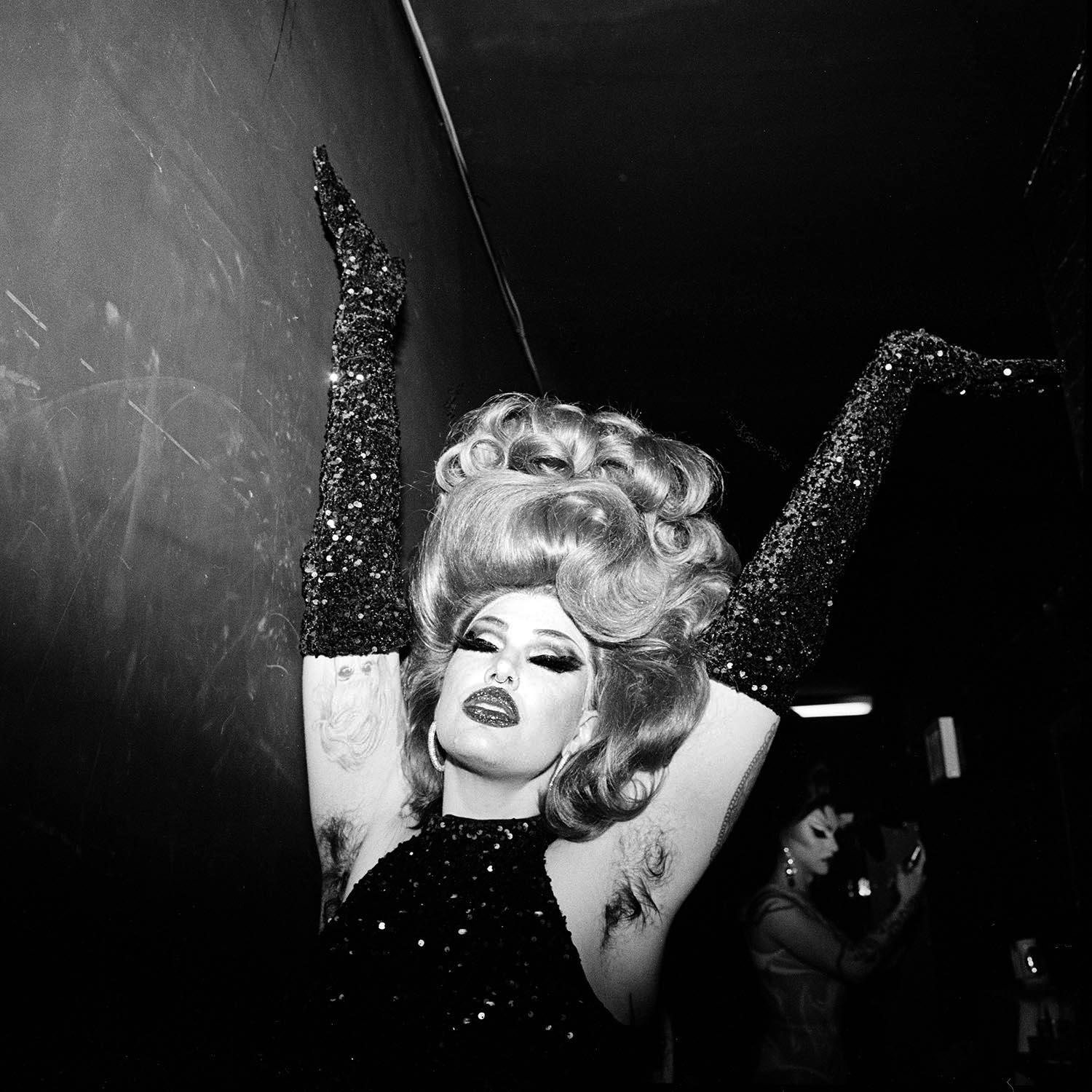
©Meryl Meisler, Miss Malice, birthday femme, Switch n’ Play, Littlefield, Brooklyn, NY, January 2023, Gelatin Silver Print
KE: In this project, you seem to document the moments around you, rather than compose the image yourself. Why choose to photograph this way? Do you think the act of documenting rather than composing the image allows for more interpretation from the viewer?
MM: In retrospect, my work is a visual memoir. I usually don’t go to photograph; I photograph where I am going. Some of the photographs are composed. For example, the two Self Portraits in My Childhood Mirror (1976 and 2023) were made by physically composting portraits of life from birth to the present day. The mirror itself was not a setup. It still hangs in my guest room. Photographing life as it happens is exciting and challenging for me.
KE: This body of work includes people from all walks of life and some seem to be caught in very intimate moments. I would love to discuss the idea of vulnerability with you. Why did you choose to include images where people were exposing a part of themselves, whether physically or literally? Did photographing others in this way have an effect on thoughts of your own vulnerability?
MM: My photographs are of self-portraits, family, friends, neighbors, or strangers. Most of the time, I ask permission. I strive to photograph people expressing joyful exuberance, confidence, or pride. The more intimate ones are of people I know well and love. If it comes across as vulnerability, who isn’t vulnerable or sensitive? I am. I hope the viewer also senses mutual respect, trust, and shared humor.
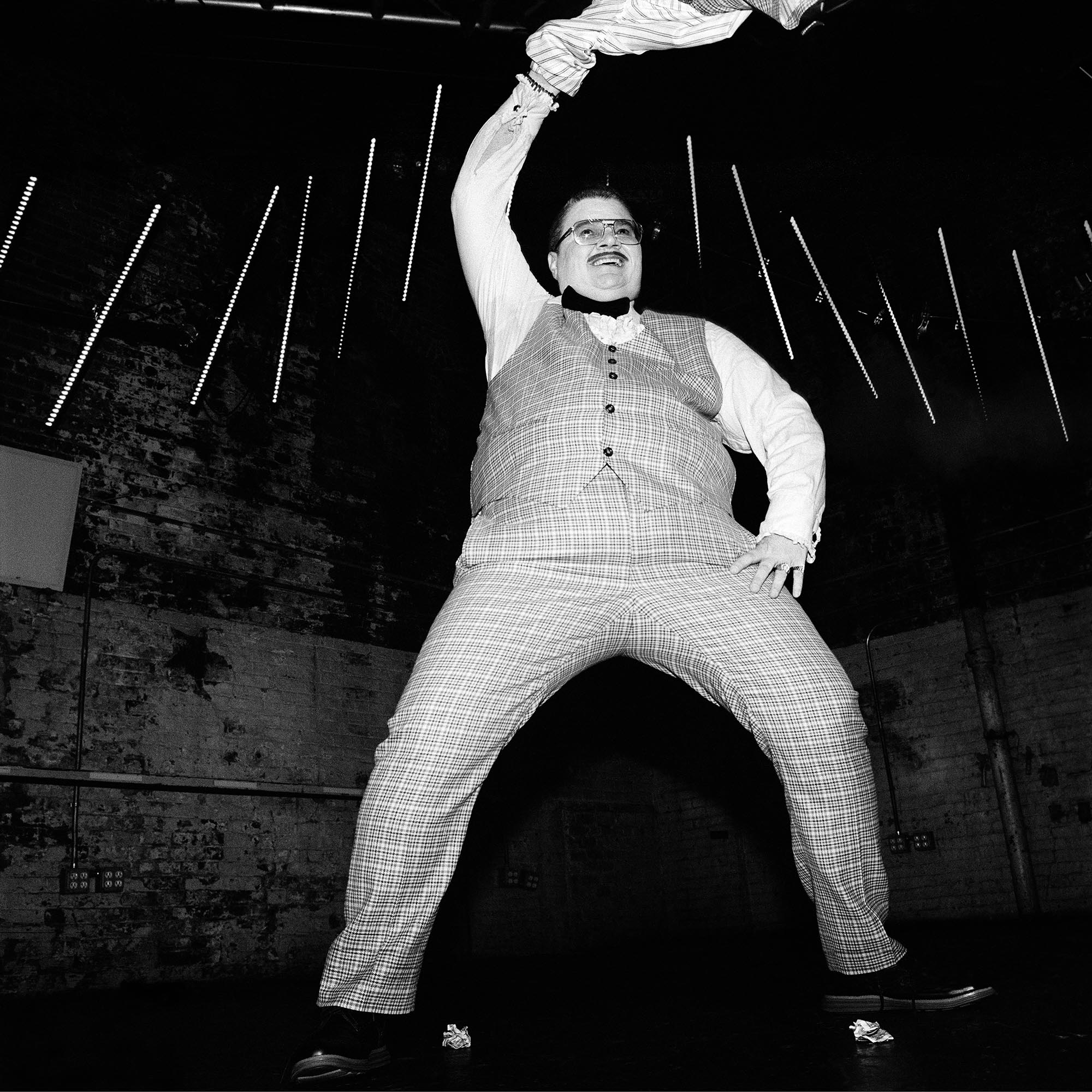
©Meryl Meisler, MC Murray Hill with Jacket Overhead, The Big Drag King Show, 3 Dollar Bill, Brooklyn, NY, June 2023, Gelatin Silver Print
KE: It seems as though a project like this could go on forever, continually photographing those you come into contact with.How did you know Simply Scintillating was a finished project?
MM: I have no intention to stop photographing people, places, and situations I find joyful, uplifting, iconically reminiscent, or something I’ve never seen before. Simply Scintillating is not a finished project; it is a pause to reflect. It might be the title of my next book. With good fortune, we shall see and continue seeing.

©Meryl Meisler, Feminine Floored Hurrah (Potassa de la Fayette), NY, NY, Hurrah, March 1978 #2, Gelatin Silver Print
KE: I find it quite intriguing that you chose to reveal your archive of images only after your retirement in 2010. What were the motivating factors behind this choice?
MM: I have made and exhibited my photographic-based artwork since moving to NYC in 1975. Teaching school is an intense job. I couldn’t devote myself full-time to getting my work “out there” until retirement. Many subjects I photographed would not have been considered “appropriate” for a K-12 schoolteacher who wanted to stay employed. In addition, I didn’t realize the strength of my unaltered still photographs. It took time, perspective, and many wonderful people who helped me open invisible doors and realize that my work has historical, cultural, and artistic significance.
KE: To conclude I would like to ask what is next for you. Is there anything you are currently working on?
MM: Currently, I am working on new self-portraits, going out again to photograph nightlife, family gatherings, travels, digging through my archives, upcoming group shows here and abroad, editing images for the next book, and prioritizing health and well-being before all else. Life, time, and opportunities to create and share are divine gifts never to be taken for granted. What’s next beholds mystery and gratitude.
Posts on Lenscratch may not be reproduced without the permission of the Lenscratch staff and the photographer.
Recommended
-
Martin Stranka: All My StrangersDecember 14th, 2025
-
The Family Album of Ralph Eugene Meatyard at the High MuseumDecember 10th, 2025
-
Paccarik Orue: El MuquiDecember 9th, 2025
-
Richard Renaldi: Billions ServedDecember 6th, 2025
-
The Art of Documentary Photography: Rania MatarOctober 25th, 2025

